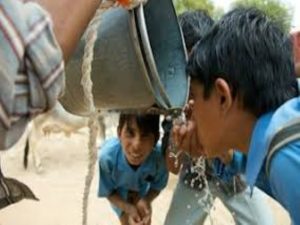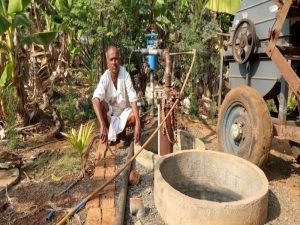India is experiencing its worst ever water crisis. How did we get here?
News stories on India’s water crisis start peaking just as summer sets in. Images of wells and taps running dry, conflicts on drinking water, tankers being mobbed, parched earth, and failed crops dominate our news cycle. What’s missing in mainstream reporting is a comprehensive and informed understanding of what makes India’s water footprint both unique and challenging.
What underlies India’s insatiable thirst for water?
- India has a serious water problem
The 2030 Water Resources Group estimates that if we continue to consume water as per the current rate, India will have only half the water it needs by 2030—a flashpoint that’s only ten years away.
- Nearly 80 percent of India’s freshwater is used in agriculture
This is an unusually large water footprint for agriculture. China and South Africa use approximately 64 percent and 62 percent of their renewable freshwater resources for agriculture.

Photo courtesy: Flickr
Groundwater accounts for 90 percent of the drinking water requirements in rural India and nearly 50 percent in urban areas.
- Over half of India’s cultivated land is under water-intensive crops
Fifty-four percent of India’s 141.4 million hectares of cultivable land is under water-intensive crops—rice, wheat, sugarcane, and cotton. Farmers are incentivised to grow water-intensive crops as they are eligible for the government’s minimum support price (MSP), which protects them from the risk of fluctuating prices.
- India uses at least twice the amount of water to grow one unit of food versus comparable countries
For instance, for every 1000 litres of water, China produces 0.46 kilograms of rice and 1.08 kilograms of cereal. For that amount of water, India produces only 0.23 kilograms of rice and 0.36 kilograms of cereal.
- India’s farmers rely mainly on tube wells to extract groundwater for their crops
Despite India’s large dams and canal systems, groundwater accounts for 63 percent of water used for irrigation by farmers; canals account for only 26 percent.
- Conservative estimates suggest that India has over 30 million borewells today
Until 1960, Indian farmers accessed a few tens of thousands of mechanical pumps using diesel or electricity to pump water. As of 2009, for every four cultivator households, one owned a tube well and two purchased groundwater from tube well owners. A combination of incentives (such as MSP for water-intensive crops) and subsidies (such as free electricity) have encouraged large-scale extraction of groundwater.
- India draws nearly 25 percent of the world’s groundwater
That’s more groundwater than China and the United States combined. India withdraws two times the amount of groundwater compared to China, despite having a similar population size.

Photo courtesy: Indiamart
- Sixty percent of India’s districts have been declared critical on groundwater
This means that they either have scarce supply or poor quality of groundwater, or both. This has put 70 percent of rural households who depend on agriculture for their livelihood at risk.
- India’s depleting groundwater reserves also impact our drinking water
Groundwater accounts for 90 percent of the drinking water requirements in rural India and nearly 50 percent in urban areas. Excessive extraction has caused contamination. As a result, India is ranked 120 out of 122 countries in the global water quality index.
- The country’s water crisis has a significant economic cost
A NITI Aayog report suggests that severe water scarcity will eventually lead to a 6 percent loss in the country’s GDP.
For too long, we’ve taken a supply lens to address issues related to water, within a development paradigm that has focused on building infrastructure, such as dams, canals, minor irrigation structures, and now water pipes. India’s water story starts and ends in her farms. What India needs now is a movement to help her farmers use water judiciously for every unit of food that they grow. This holds the key to a water-secure future for the country and an end to stories of distress that mark each summer.
Neerain is proud to republish this article for spreading awareness about situation of water, for our stakeholders. Credit whatsoever goes to the Author.
